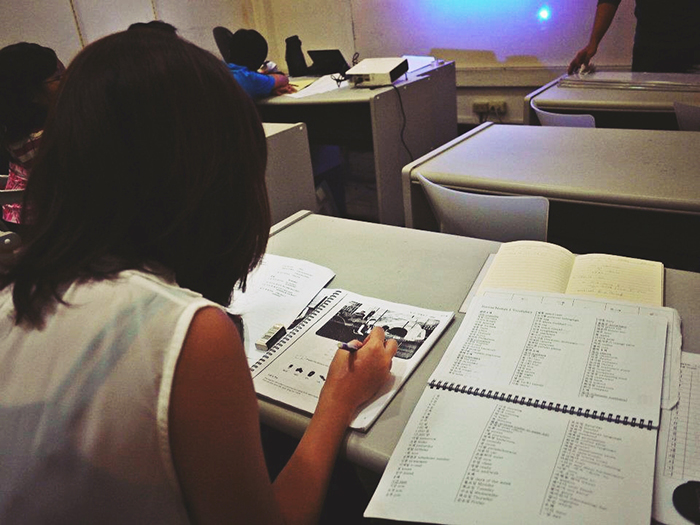View this article in another language
- 한국어
- English
- 日本語
- 中文
- العربية
- Español
- Français
- Deutsch
- Pусский
- Tiếng Việt
- Indonesian

More people around the world are learning the Korean language. (Nadine Postigo)
Is learning Korean a New Year's resolution for you? If so, you're in luck. Whether through taking formal classes or resorting to self-study using online videos, podcasts, books and mobile apps, one can learn the language in a variety of ways.
Not everyone has the ability to memorize or learn a language fast. Thus I share here my ways of memorizing Korean vocabulary words or phrases.
My basic tip is to find memorable clues in the words to speed up memorization. This technique has helped me remember and distinguish Korean terms that can prove confusing.
If possible, try to connect Korean words to those in English or your native language. This can help learners naturally recall or differentiate newly acquired Korean vocabulary.
An easy example to start with is the Korean word for "man," namja (남자). By remembering that spelling "man" backwards is "nam," that can help you remember namja faster.
The following are other examples of Korean phrases and words that initially confused me but I later distinguished by finding certain clues to help me.
"I'm hungry" vs. "I'm full"
"I'm hungry" in Korean is baegopa (yo) / 배고파(요) while "I'm full" is baebulleo (yo) / 배불러(요). So if confused by both terms, just think of the word "full" as a clue. Remember it as bae-full-eo to memorize baebulleo and when to use it.
Spoon (sutgarak / 숟가락) vs. Chopsticks (jeotgarak / 젓가락)
I was able to memorize the Korean words for these two eating utensils faster by remembering that spoon and sutgarak both start with "s" while chopsticks and jeotgarak start with the same "ch" sound.
Right (oreunjjok /오른쪽) vs. Left (woenjjok / 왼쪽)
I learned how to tell the two words apart by remembering one significant letter in oreunjjok: "r." So I thought of that letter in oreunjjok standing for "right" in English as well, so in my mind, it's o-right-jjok.
Up (wi /위) vs. Down (arae / 아래)
The romanization of 위 is wi. Since this word means top or up, just remember that the word "up" comprises two letters like wi.
Fun tip: Listening to EXID’s song "Up & Down" (위아래) will get these two words stuck in your mind.
Jal meokgesseumnida (잘 먹겠습니다 / I will eat well) vs. jal meokeosseumnida (잘 먹었습니다 / I ate well)
To a beginner in Korean, these two terms can be confusing to use. My method for this is slightly tricky since I modified the pronunciation and spelling in my head.
So to remember that Jal meokgeseseumnida is what to say before eating, I remember it as Jal meok-GET-sseumnida using the present tense of get as the keyword to remember. So it's like someone about to "get" yummy Korean food. Jal meokeosseumnida is past tense for me because it's pronounced Jal meo-GOT-sseumnida, with the word "got" used because it’s the past tense of "get."
ㅗ vs. ㅜ
When I was learning Hangeul, the vowels ㅗ (o) and ㅜ (u) also confused me. To learn how to use ㅜ, I thought of someone pouting and sometimes lowering one’s vocal tone, just like how ㅜ features a line going downward.
So do my tips make sense? These are just a few examples but I hope you get what I mean. Good luck.
wisdom117@korea.kr
* This article is written by a Korea.net Honorary Reporter. Our group of Honorary Reporters are from all around the world, and they share with Korea.net their love and passion for all things Korean.